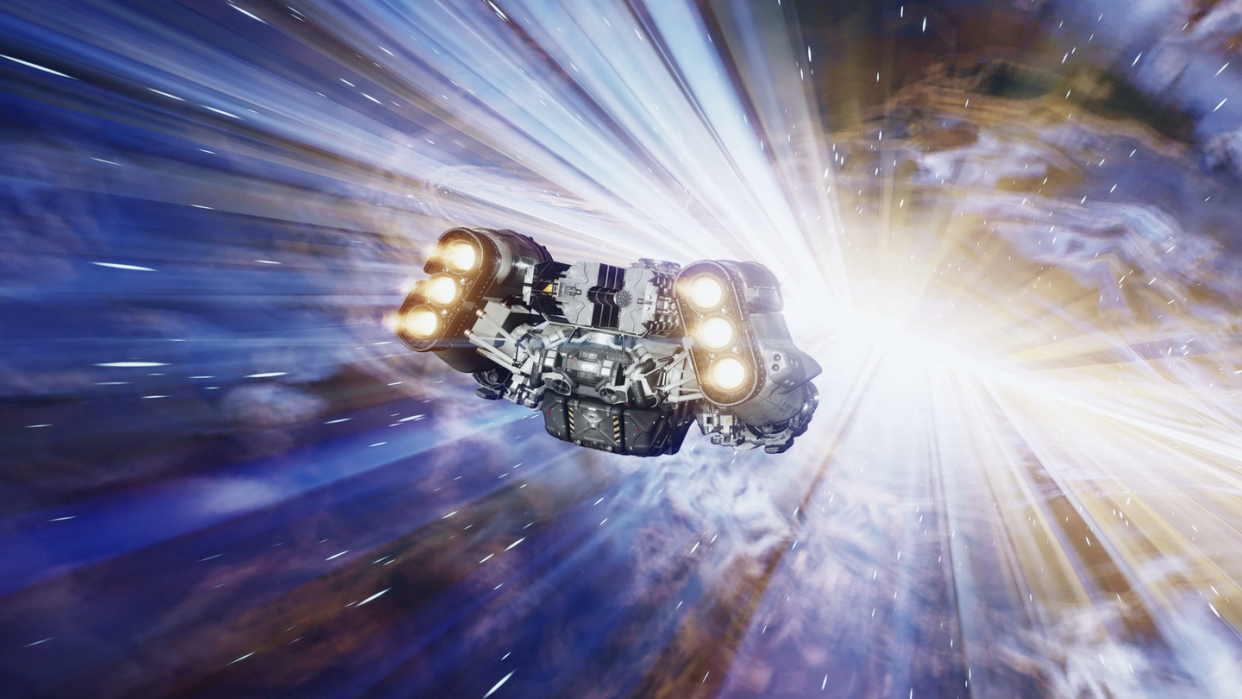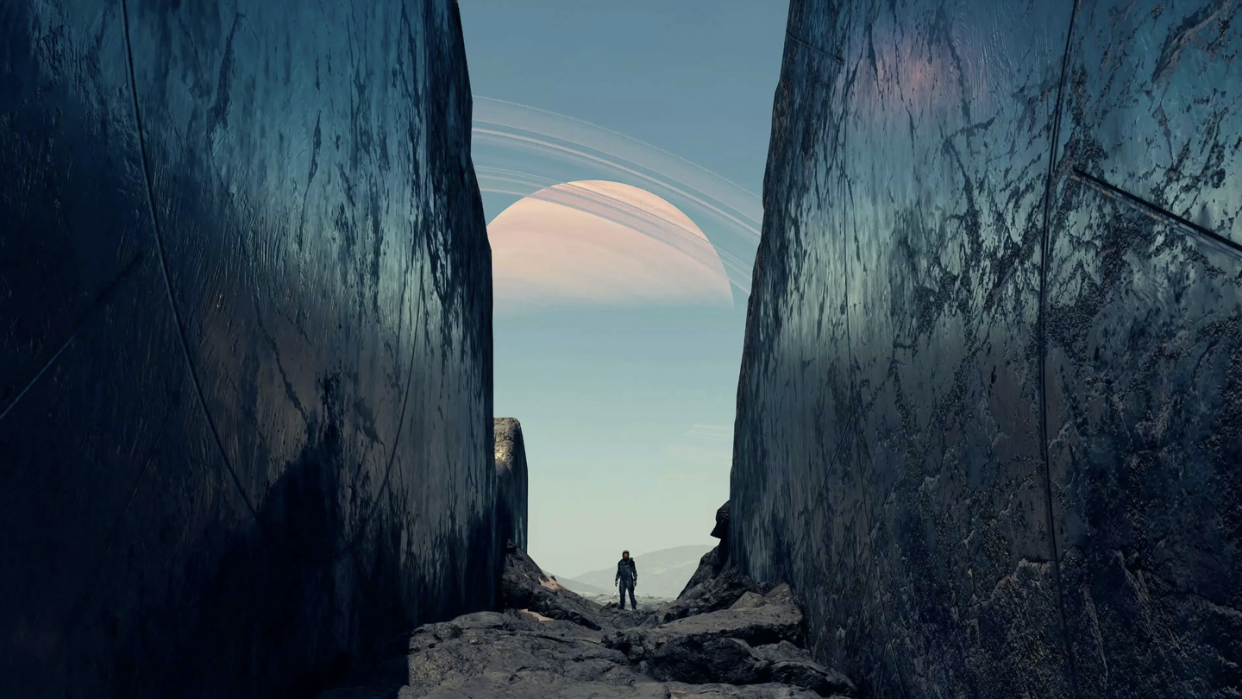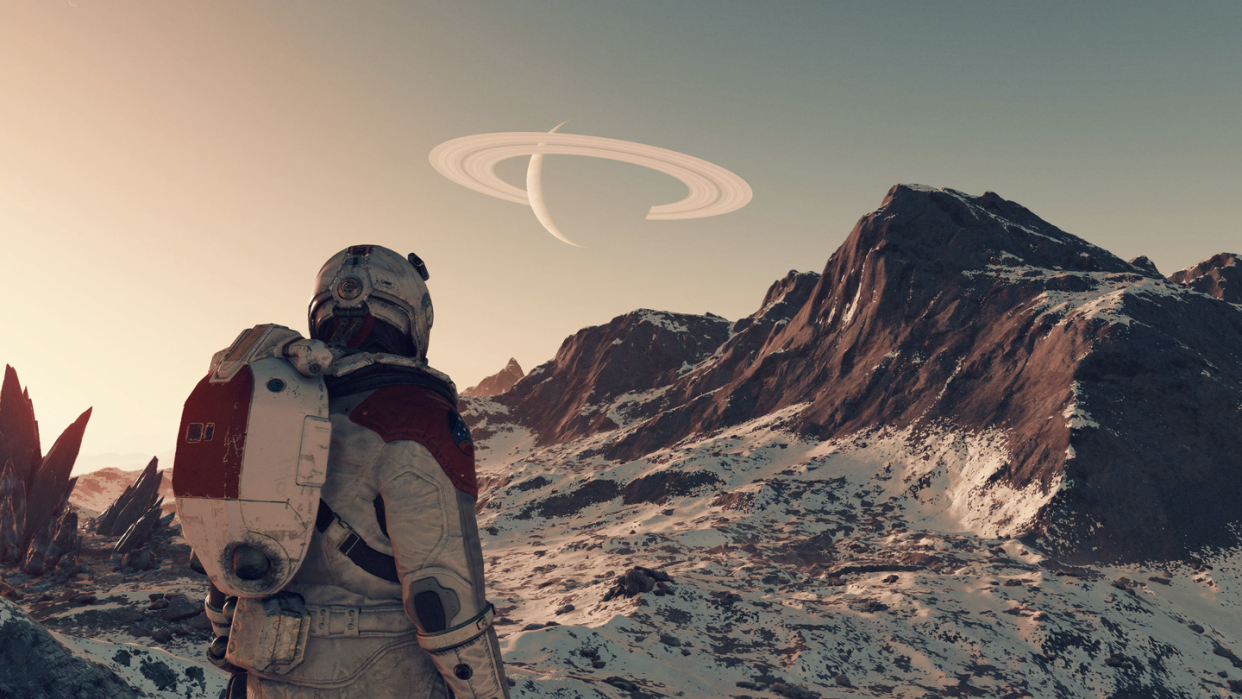'Starfield' Is a Miracle

Have you ever heard of the Jurassic Park effect? In the 1990s, Steven Spielberg’s blockbuster was so awe-inspiring, it generated an explosion of interest in dinosaurs. “Before that movie, there were only a handful of professional paleontologists at posh universities and museums in North America and Europe,” Dr. Steve Brusatte, the author of The Rise and Fall of the Dinosaurs, tells me. “Today, I have colleagues in Asia, South America, and Africa who wouldn't be dinosaur hunters if it wasn't for Jurassic Park.”
Why am I talking about a 30-year-old movie? I know this sounds like an exaggeration, but Starfield is so good—so once-in-a-generation spectacular—I honestly believe it’ll have a Jurassic Park effect on astronomy and aerospace engineering for decades to come.
This dawns on me sometime between 2:30 and 3:00 a.m. while sprinting across the frozen surface of Europa, one of Jupiter's moons. Black boulders are strewn across the ice as far as I can see. Above me, the Milky Way forms a sky-spanning arch between the distant sun and the looming presence of Jupiter. In the 24th century, the gas giant is girdled by rings larger than Saturn’s for reasons I’ll soon discover.
I’m not here on a quest. I know there are hundreds of exoplanets to explore in Starfield, but I’ve dreamed of seeing Europa since the first time I watched 2010: The Year We Made Contact in the lobby of my dad’s planetarium 25 years ago.
Suddenly, a notification buzzes on my wristwatch: my traveling partner, Andreja, wants to speak with me. I stop near a towering crystal formation to give her time to catch up. When we talk, I can see the pain in her eyes and hear the emotion in her voice. She reveals a secret about her past, something that makes it hard for her to fit in with our colleagues in Constellation, a group of explorers dedicated to tracking down mysterious artifacts hidden across the universe.

Obviously, part of my brain knows I’m listening to a scripted NPC on a procedurally generated planet. But that part of me has been hypnotized into a deep sleep by Todd Howard. The rest of my brain feels genuine affection for Andreja, alongside the unmistakable thrill of adventure. What other discoveries will I make? Where else will I explore?
A video game hasn’t made me feel this way since Riven when I was 12 years old. I realize, not for the last time, that Starfield is something of a miracle.
I’ll admit that for the past two years, I’ve been skeptical of Starfield. After watching the first teaser trailer, I worried Bethesda's new RPG would be a desaturated remake of No Man's Sky—a game I found soulless, cumbersome, and exhausting to play.
I was wrong. “Live another life, in another world” has long been Todd Howard’s mantra at Bethesda, from the fantasy realms of The Elder Scrolls to the post-apocalyptic settlements of Fallout. But Starfield takes that idea to an unprecedented level of intricacy and immersion. I’m pretty sure it’s the largest fictional universe anyone has ever built, and the freedom of choice and customization make it an absolute rocket-blast to explore.
Your journey begins in an underground cavern, where you stumble into the main story campaign: an Indiana Jones-inspired, interstellar treasure hunt for the remnants of an unknown civilization. A few missions later, after the galaxy opens up and you’ve visited humanity’s four largest colonies, you realize the main story is only the tip of Starfield's narrative iceberg.
You can spend weeks, months, or years as an astrobiologist surveying flora, fauna, and other natural phenomena on hundreds of planets and moons. You can investigate the arrival of a deadly human-killing alien that looks like it was designed by John Carpenter. You can enlist in the United Colonies Vanguard militia, or the Freestar Collective’s Rangers, and conduct undercover operations to root out violent offenders. You can become a space pirate in the Crimson Fleet and commandeer spaceships after you plunder them for loot. You can scour the universe for old-Earth novels and sell them to Sinclair’s Books for a nice profit. Or if you’re like me, you can obsess over the design of your spaceships and outposts until they feel like second homes.
If that’s not enough, there are a few major elements of Starfield that Bethesda hasn’t even hinted at yet. Also, I can’t tell you about some of the main reasons I’ve fallen in love with the game for fear of spoiling them. But broadly speaking, Starfield is grounded in near-future science like Andy Weir’s The Martian, from aeronautics to astrogeology. At the same time, its galaxy-spanning civilization — connected by faster-than-light technology, split into rival factions, enthralled by a seemingly alien mystery — reminds me of Dan Simmons’ Hyperion. But the paths you choose could lead to a game experience that’s more like Starship Troopers, or Firefly, or Blade Runner 2049.

Not everything works. The map you use to navigate between star systems is disorienting. Cydonia and Neon, two of the four major cities, feel a little undercooked compared to the gleam of New Atlantis and the rust of Akila City. The background you select for your character only gives you a head-start on a few branches of the game’s skill tree, as opposed to narrative nuances; for instance, even though I chose to play as a “Professor,” Constellation’s wealthy benefactor called me a dumb rock-breaker because I’d been working in a mine. Most impactfully, the key missions of the main story campaign—retrieving artifacts and exploring ruins—quickly lose their sense of awe when you realize each artifact and each ruin is exactly the same.
But let me be clear: These quibbles haven’t detracted from my enjoyment of the game, because there’s so much else to do, and because most of it is fantastic. People are still going to be playing Starfield and discovering new things about it when the Europa Clipper reaches Jupiter in 2030. Some graduate student is going to write a thesis one day about the urban planning of New Atlantis. The first astronauts to walk on Mars might join NASA, JAXA, ISRO, or the ESA because of this game.
Starfield is a cinematic masterwork that strengthens Shira Ovide’s argument that we need a new word for video games. Between this, Tears of the Kingdom, Baldur’s Gate III, and Diablo IV (plus high hopes for Jusant and sequels to Alan Wake and The Talos Principle later this year), 2023 could go down as the best year for gamers since 1992, when Wolfenstein 3D, Final Fantasy V, Sonic the Hedgehog 2, Super Mario Kart, Mortal Kombat, and Alone in the Dark changed the industry forever. It's possible future historians will look back on 2023 as the year video games leveled up–with Starfield as the primary catalyst.
You Might Also Like
